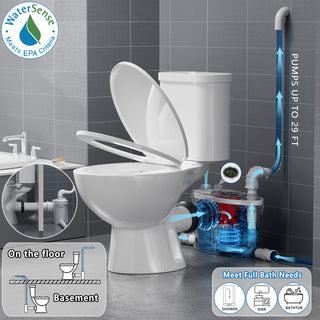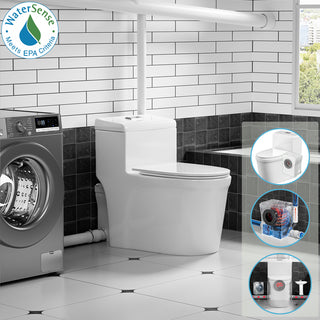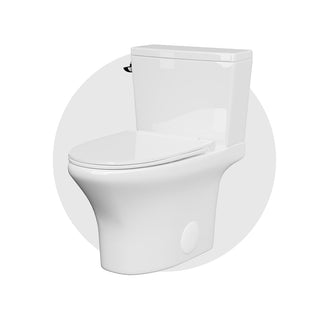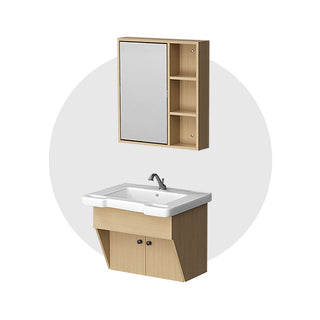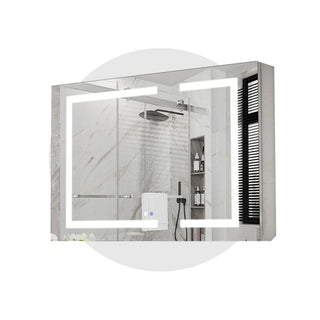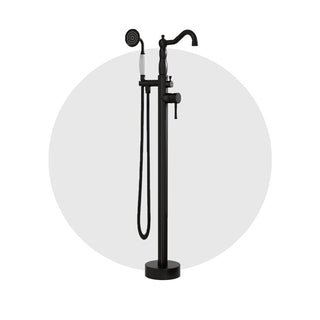I. Introduction: Why Code-Compliant Toilet Height Matters
Toilet height isn't just about comfort—it can be a legal requirement. For public spaces, commercial properties, and certain types of housing, building codes and accessibility laws dictate how tall a toilet must be.
Whether you're a homeowner renovating for accessibility or a contractor designing a public facility, understanding toilet height requirements helps you meet legal standards and avoid costly compliance issues.
II. ADA Toilet Height Requirements (Public & Commercial Use)
The Americans with Disabilities Act (ADA) establishes clear requirements for toilet height and accessibility in public restrooms and certain types of housing. These rules are legally binding and enforced by the U.S. Department of Justice.
✅ What the ADA Says (Official Source: 28 CFR § 36.403)
According to 2010 ADA Standards for Accessible Design, toilets must meet the following:
- Seat height must be 17″–19″ (43 cm–48 cm) measured from the floor to the top of the toilet seat
- Toilet must be positioned 16″–18″ from the side wall to the toilet centerline
-
Flush controls must be:
- Operable with one hand
- Not requiring tight grasping, pinching, or twisting of the wrist
- Mounted no more than 44″ above the floor
- Grab bars must be properly placed (typically 33″–36″ above floor, parallel to the side wall)
These requirements apply to:
- Public restrooms in commercial buildings
- Schools, medical offices, retail spaces
- Certain government-funded housing (e.g., HUD Section 504)
III. IBC & ICC Requirements: When Local Code Follows National Standards
In addition to the ADA, many building projects follow the International Building Code (IBC) and ICC A117.1 standards, particularly for multi-family housing or assisted living facilities.
Key Alignment Points:
- IBC Chapter 11 adopts ADA for accessibility
- ICC A117.1 (Accessible and Usable Buildings and Facilities) also requires 17″–19″ seat height
- ANSI-compliant fixtures are often required in state-level commercial code
⚠️ Important: Always check with your local code authority, as adoption of IBC and ICC can vary by state or municipality.
IV. Residential Bathrooms: What’s Suggested vs. What’s Required
In most residential homes, there's no legal requirement for toilet height unless you're remodeling under a state-funded accessibility program or aging-in-place initiative.
But many homeowners choose ADA-height or Comfort Height toilets (typically 17″–19″) for added ease—especially in:
- Senior households
- Multi-generational homes
- Remodels anticipating future mobility needs
These models aren’t certified ADA unless labeled as such, but they often meet the same height range.
👉 Learn more about Comfort Height Toilets
V. Extra Tall Toilets: Taller Than Code Allows
Some toilets go beyond ADA height—typically 20″ to 21.8″ seat height. These “Extra Tall” models are helpful for users over 6'2″ or those with severe mobility limitations.
However, by ADA definition, any toilet above 19″ is not compliant for public or commercial use—even if it’s more comfortable.
- Useful for private homes only
- Not legal for ADA-compliant restrooms
VI. What Makes a Toilet Truly “Code-Compliant”?
To ensure you're installing a legally acceptable toilet:
✔ Confirm seat height is 17″–19″, including the seat
✔ Check if the product is labeled ADA-compliant or ANSI A117.1 certified
✔ Verify that the overall design layout includes:
- Grab bar placement
- Clearances from walls and doors
- Flush control reachability
Just matching the height isn't enough—compliance includes the whole toilet environment.
VII. Final Tips for Contractors & Designers
- When building commercial restrooms, always use fully certified ADA fixtures
- For residential projects, comfort can guide the choice, but consider future accessibility
- Double-check local amendments to ADA or IBC—especially in California, Texas, or New York, where additional regulations may apply
- In multi-user spaces (e.g. offices, schools), default to ADA standards even for single-use stalls
✅ Summary Table: Toilet Height by Code Context
| Use Case | Required Height (Seat) | Code/Standard | Notes |
| Public/Commercial Toilet | 17″–19″ |
ADA 2010 (28 CFR §36.403) |
Also requires grab bars, controls |
| Multi-Family Housing |
17″–19″ |
IBC / ICC A117.1 |
Depends on local adoption |
| Residential Bathroom |
No code minimum |
N/A |
Comfort Height recommended |
| Senior Housing (Funded) |
17″–19″ |
ADA / State Accessibility |
Check funding program rules |
| Extra Tall Models |
>19″ |
Not code-compliant |
Private use only |


